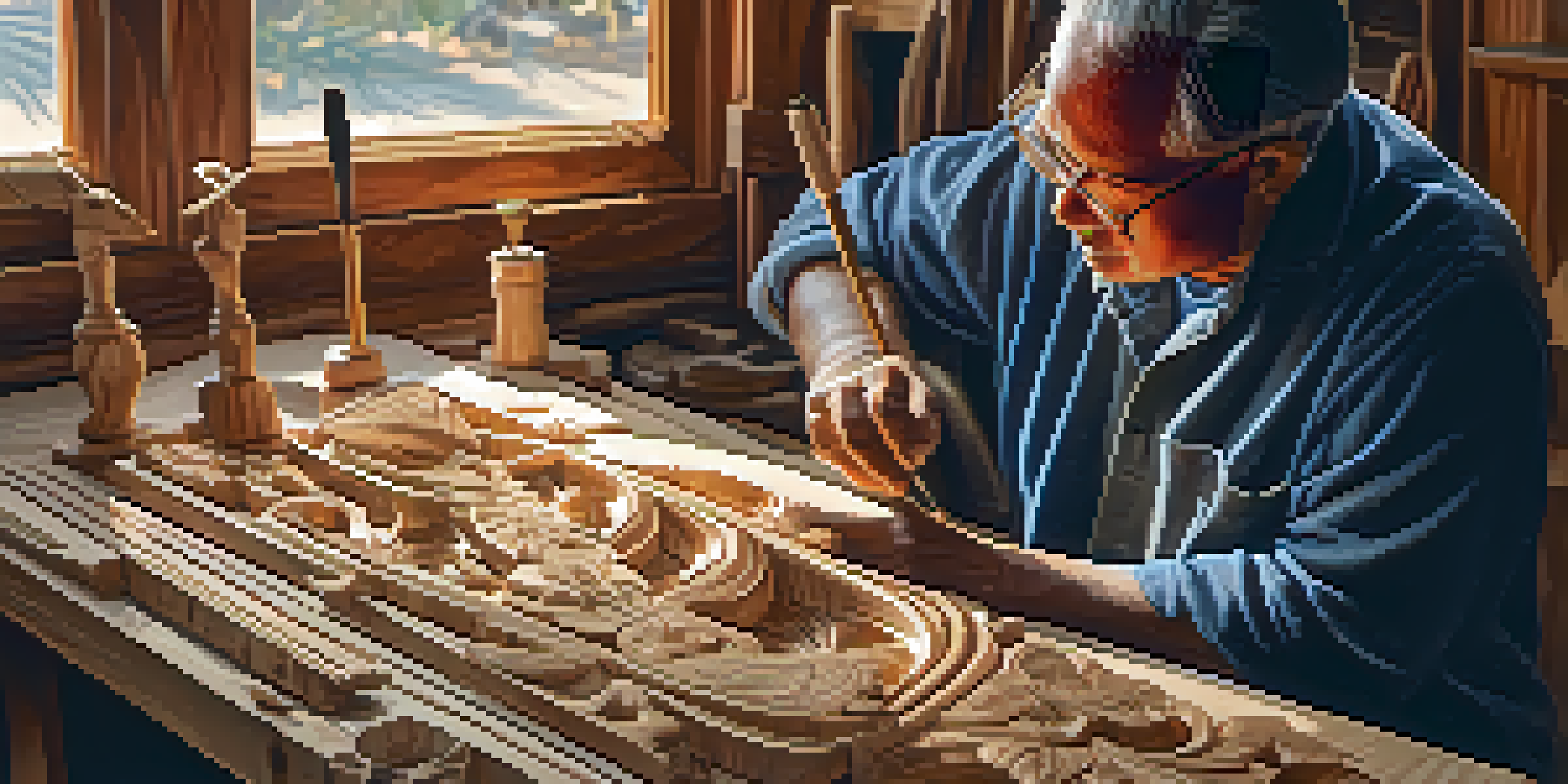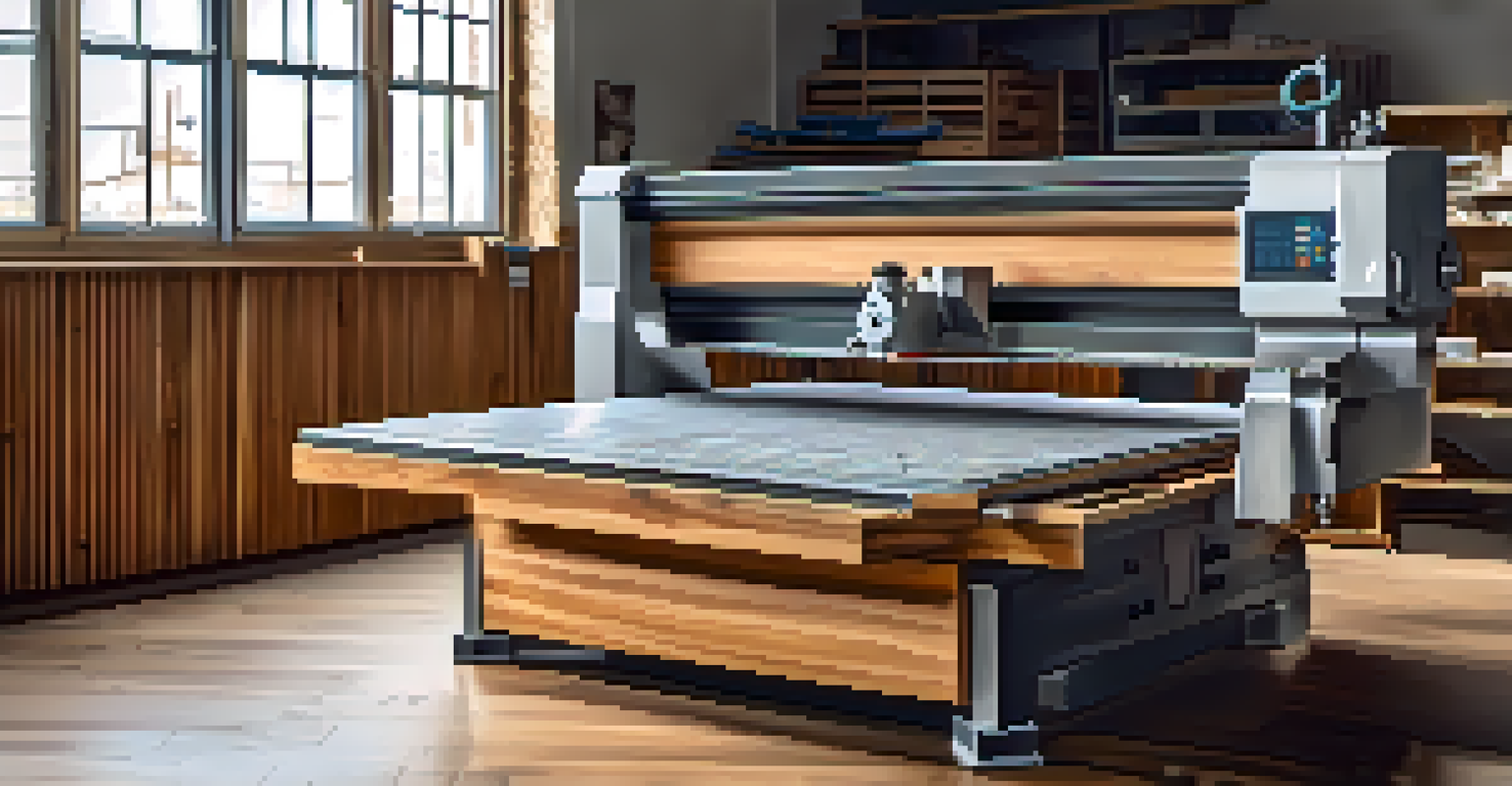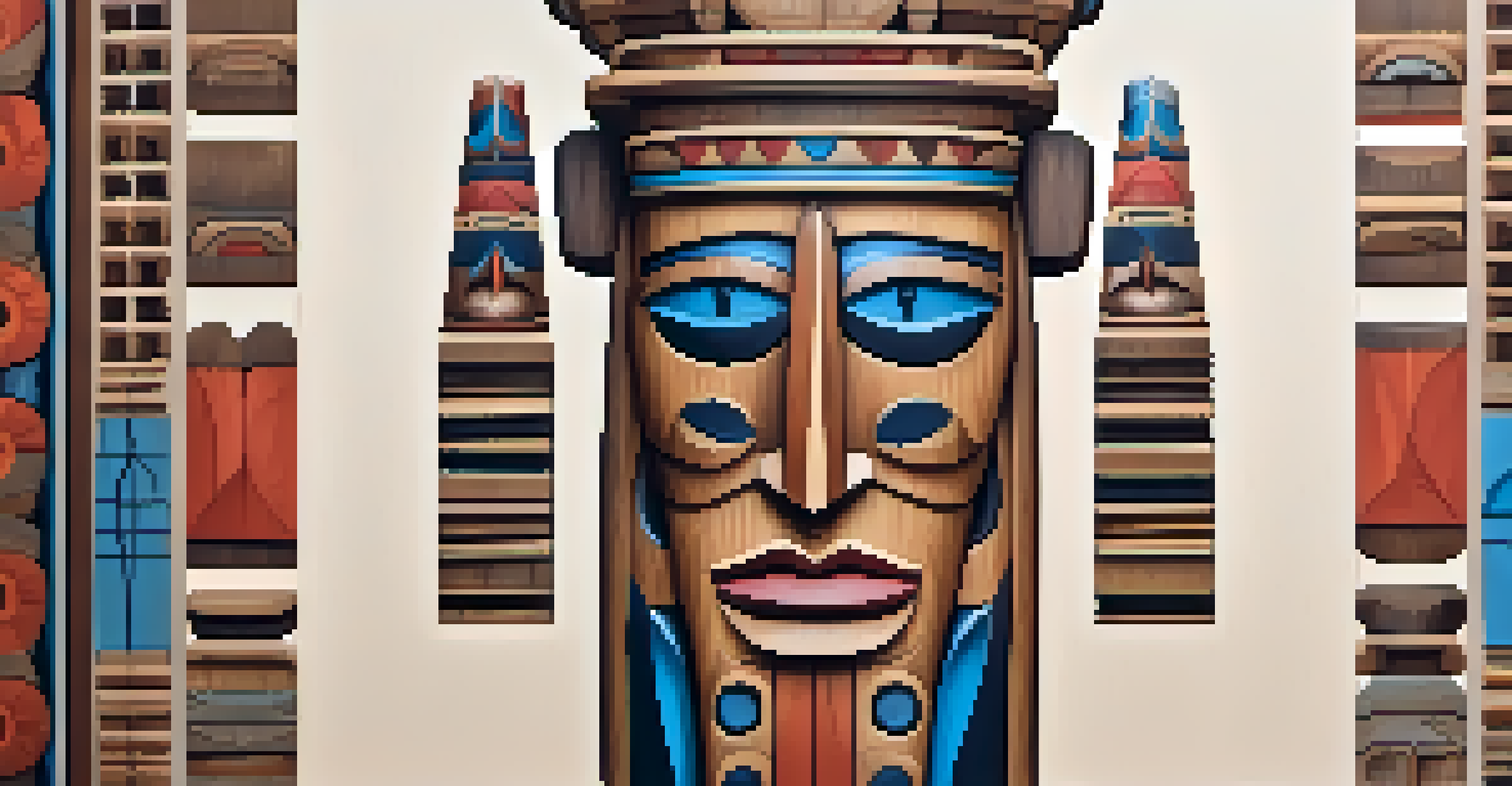Blending Tradition and Technology in Carving Techniques

Understanding Traditional Carving Techniques
Traditional carving has been a revered craft for centuries, utilizing hand tools and techniques passed down through generations. Artisans often rely on their intuition and experience, bringing a personal touch to each piece. This method not only showcases skill but also embodies cultural stories and heritage, making every carved item unique.
Art is not what you see, but what you make others see.
For example, in many cultures, wood carving is more than just an art form; it’s a vital part of community identity. From intricate totems to delicate furniture, traditional carvings reflect the values and beliefs of the society that creates them. The tactile nature of hand-carving allows for a deep connection between the artist and the material.
However, while these techniques are steeped in history, they also face the challenge of remaining relevant in a rapidly changing world. The need for efficiency and precision in today’s market pushes artisans to consider how they can adapt without losing their artistic roots.
The Rise of Technology in Carving
Advancements in technology have revolutionized various crafts, and carving is no exception. Tools like CNC (Computer Numerical Control) machines allow for precise cuts and intricate designs that would be incredibly time-consuming by hand. This precision can lead to greater consistency, making it easier to replicate designs for mass production.

For instance, a single design can be carved into multiple items without the risk of human error, ensuring uniformity. This aspect is especially appealing to businesses that need to meet high demand without sacrificing quality. Yet, this shift also raises questions about the authenticity of the craft and the loss of personal touch.
Tradition Meets Technology
The blending of traditional carving techniques with modern technology enhances creativity while preserving cultural heritage.
Despite these concerns, many craftsmen are embracing technology, finding ways to integrate it into their traditional practices. By using computer-aided design (CAD) software, artisans can experiment with new shapes and patterns before committing to the physical carving process.
Blending Techniques for Unique Outcomes
The intersection of traditional carving and modern technology has led to innovative techniques that combine the best of both worlds. For example, artisans might start with a CNC machine to create a base structure and then finish the details by hand. This approach allows them to maintain the integrity of traditional craftsmanship while benefiting from technological efficiency.
The only way to do great work is to love what you do.
Moreover, blending these methods can inspire new artistic expressions. Imagine a wooden sculpture that features both perfectly machined lines and hand-carved organic shapes; the result is a stunning visual contrast that tells a story of both history and innovation. This synergy can also appeal to a broader audience, attracting those who appreciate both craftsmanship and modern design.
Such combinations challenge the notion of what carving can be, pushing artists to explore their creativity further. The opportunity to experiment and innovate has never been greater, allowing for the evolution of styles and techniques.
Preserving Cultural Heritage Through Technology
As much as technology can modernize carving, it also plays a critical role in preserving cultural heritage. Digital archiving allows for the documentation of traditional designs and techniques, ensuring they are not lost to time. By creating digital replicas of historic carvings, communities can keep their heritage alive and accessible for future generations.
Additionally, technology enables artisans to share their knowledge more widely. Online platforms and tutorials can help teach traditional techniques to aspiring carvers around the globe. This not only broadens the reach of these crafts but also fosters a global appreciation for diverse cultural expressions.
Challenges for Modern Artisans
Carvers face the risk of losing hand-carving skills and distinguishing their authentic work amidst a market filled with mass-produced items.
Furthermore, blending technology with traditional practices can lead to a revival of interest in these crafts, especially among younger generations. Engaging with technology can make carving more appealing and relevant, ensuring that these traditions continue to thrive.
Challenges Facing Modern Carvers
While the fusion of tradition and technology presents exciting possibilities, it also comes with its share of challenges. One major concern is the potential loss of skills among new artisans. As reliance on machines increases, there’s a risk that the nuanced techniques of hand-carving may become less practiced and appreciated.
Additionally, the market can become saturated with mass-produced items, threatening the livelihood of traditional artisans. Consumers may find it difficult to distinguish between authentic hand-carved pieces and machine-made replicas, leading to diminished value for skilled craftsmanship. This challenges artisans to find their niche and communicate the worth of their work.
Moreover, navigating the balance between efficiency and artistry is an ongoing struggle. Carvers must continually adapt to new technologies while staying true to their artistic vision, ensuring that their work remains both relevant and authentic.
The Future of Carving: A Harmonious Approach
Looking ahead, the future of carving lies in a harmonious blend of tradition and modernity. As artisans continue to explore the creative possibilities that technology offers, there’s a growing emphasis on sustainability and ethical practices. This conscious approach not only honors the materials used but also the cultural stories behind the crafts.
Collaborations between traditional artisans and tech innovators are also becoming more common. These partnerships can lead to new designs that celebrate historical techniques while incorporating modern aesthetics. Such collaborations can inspire a fresh wave of creativity that resonates with contemporary audiences.
Future of Carving is Collaborative
Collaborations between traditional artisans and tech innovators are essential for evolving the craft and appealing to contemporary audiences.
Ultimately, the goal is to create a vibrant community where both traditional and technological methods coexist. By valuing the skills of the past while embracing the innovations of the present, carving can evolve into a dynamic art form that continues to inspire and connect people across generations.
Conclusion: Celebrating the Art of Carving
In conclusion, the art of carving is at a fascinating crossroads where tradition meets technology. This dynamic interplay not only enriches the craft but also ensures its survival in a fast-paced world. By blending ancient techniques with modern tools, artisans can create unique pieces that honor their heritage while appealing to a contemporary audience.
As we celebrate the evolution of carving, it’s essential to appreciate the stories and skills behind each piece. Whether it’s a hand-carved bowl or a digitally crafted sculpture, each item carries a legacy that connects us to our past. It’s this connection that makes the art of carving so special.

Looking forward, the carving community has the potential to inspire future generations, fostering a love for both tradition and innovation. By recognizing the value in both approaches, we can ensure that the art of carving continues to thrive and evolve for years to come.